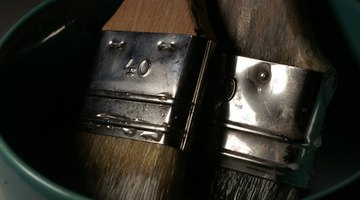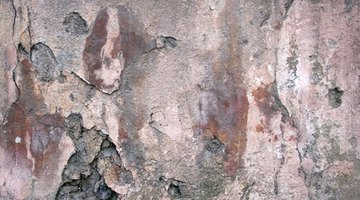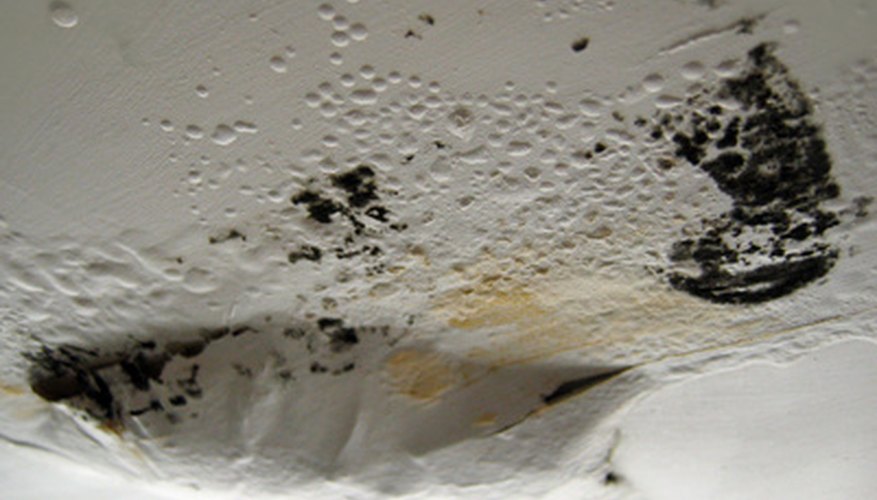A blemish on any room surface is a problem, even if it is on the ceiling. Ceilings are an important part of the design of any room. In fact, if you want to give a room a new look, you can create a dramatic difference just by making a change to the ceiling. So if there’s any damage to the ceiling, don’t assume it will go unnoticed. There are several methods to consider for hiding plaster imperfections on the ceiling.

Paint the ceiling a dark colour. Because they absorb instead of reflect light, dark paints hide flaws better than light paints. Try a navy blue, maroon, rich red, deep brown, dark grey, or even, for a touch of the dramatic, black. Darker colours can make a room seem smaller, but you can offset this effect by painting a contrasting colour on the walls, putting plenty of light sources in the room, and using lighter coloured décor: accent pillows, curtains, furniture and rugs.
- A blemish on any room surface is a problem, even if it is on the ceiling.
- Darker colours can make a room seem smaller, but you can offset this effect by painting a contrasting colour on the walls, putting plenty of light sources in the room, and using lighter coloured décor: accent pillows, curtains, furniture and rugs.

Use a textured paint. These paints, which mimic the look of marble, stucco, mortar, cement or the like, are able to hide imperfections well because they are designed to look rough and uneven when finished. You can find the paints to create this effect in any home improvement store. The directions usually consist of mixing a texturising ingredient with paint to achieve the desired consistency, then spraying or trowelling it on.

Hide imperfections in a mural. Paint right over the problem area, and it will virtually disappear in the beauty of whatever vista you choose. Your imagination is your only limitation; you can paint a city skyline, desert oasis, beach scene, underwater seascape or whatever appeals to you. As previously mentioned, ceiling treatments can create a dramatic effect: think Michelangelo’s world-renowned work in the Sistine Chapel. Hire a local artist to paint the mural for you, or find do-it-yourself kits.
- These paints, which mimic the look of marble, stucco, mortar, cement or the like, are able to hide imperfections well because they are designed to look rough and uneven when finished.
- Your imagination is your only limitation; you can paint a city skyline, desert oasis, beach scene, underwater seascape or whatever appeals to you.
